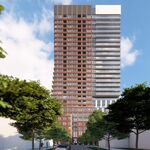BurlOak
Senior Member
I'm scratching my head trying to remember the last time the province actually needed to number a new highway. 416 in the 1980s? Last 400-series before that was probably in the early-mid 1970s.
Not exactly a regular occurrence.
I wonder if politics are at play. Could the government not want it to appear that they are building freeways. As long as nothing comes along with a 400 series number, nobody will notice if they built new corridors or not. It is environmentally friendly to not appear to build freeways.





